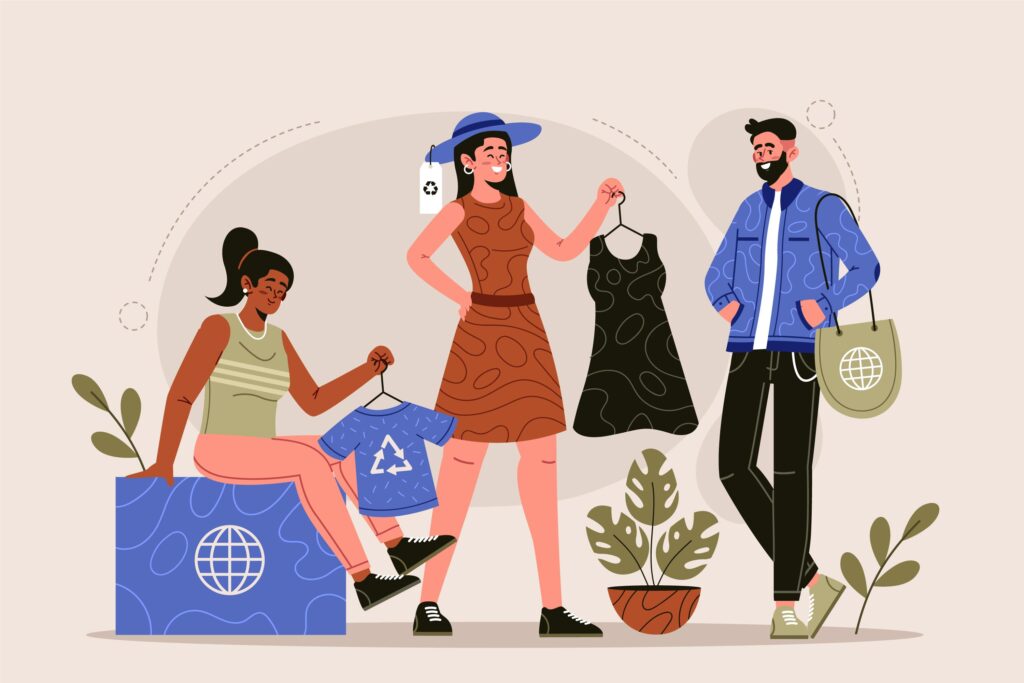Tariffs Are Killing Indie Fashion: Inside the 2025 Style Crisis
The indie fashion scene, a colorful mix of creativity and self-expression, is in trouble. As the U.S. raises tariffs on imported clothes and fabrics to a whopping 45% in 2025, small designers and boutique brands are on the brink of extinction. This trade policy, meant to protect domestic manufacturing, has turned into a cultural disaster, taking away the uniqueness of closets and flooding markets with mass-produced fast fashion. From Brooklyn studios closing to Portland’s handmade clothing becoming a luxury, here’s how tariffs are killing indie fashion and why your wardrobe choices matter more than ever.

1. The $200 Jeans Dilemma: Why Indie Brands Can’t Compete
Indie designers like Oak & Ash, known for their cult denim label, are now paying $22 per yard for imported Japanese selvedge denim. That’s a big jump from the $14 they paid before tariffs. To make up for the cost, their handmade jeans need to sell for $199. But fast-fashion giants like Shein are selling knockoffs for just $25.
2. The Silent Death of Slow Fashion
Small businesses that prioritize ethical practices, like using organic dyes, paying fair wages, and reducing waste, are the ones that are struggling the most. For example, Seattle’s Wildflower Threads, which used Kenyan organic cotton, had to close down because of the sudden increase in fabric costs due to tariffs.
3. The “Local Sourcing” Myth: Why Made-in-USA Isn’t Saving Indies
Tariffs were supposed to help U.S. manufacturing, but domestic textile mills only care about big orders from corporations. Brooklyn’s Loom & Forge waited 14 weeks for organic cotton jersey, which is almost like a death sentence for small businesses.
4. The Rise of Tariff-Resilient “Micro Collections”
Fashion brands that are smart and independent are finding innovative ways to stay afloat in a crazy retail world, changing their business models and adapting to the market to stay lean and strong.
- In Los Angeles, Neon Stitch has a unique way of doing things. They only take pre-orders, and customers pay a deposit to get their hands on the goods. This way, they don’t have to worry about unsold stuff and it makes each release feel special and exclusive.
- In Austin, Remade Studios is leading the way in sustainability by using leftover fabric from big companies. By giving these unused materials a second chance, they’re not only reducing waste but also saving money without losing style.
- In Chicago, Sew Rebellion has come up with a clever way to deal with the rising tariffs on imported clothes. They sell DIY pattern kits, so customers can make their own clothes at home and avoid paying the taxes on finished clothes.
5. How You Can Fight Back: The Indie Fashion Rescue Plan
- Some independent labels are also getting involved in policy advocacy to stay ahead of the competition. By asking for tariff exemptions, these brands are lobbying for small-batch designer waivers through laws like the proposed Designer Relief Act. If this act passes, it could give a big boost to niche fashion houses that are struggling with rising import costs.
- Consumers are also helping out independent fashion by buying “pre-loved” clothes. Websites like Depop and Poshmark keep cool indie designer pieces in circulation, which means the clothes last longer and helps the fashion industry be more sustainable and circular.
- Another innovative trend gaining traction is the rise of CSA-style fashion clubs. Inspired by community-supported agriculture models, these subscription services—such as The Local Stitch—deliver curated indie fashion looks directly to members each month. It’s a win-win: customers discover fresh, limited-run designs, while small designers gain steady, upfront support.
The Bottom Line: Fashion’s Soul Is at Stake
Tariffs aren’t just killing indie fashion; they’re also hurting our culture and economy. We lose the joy of wearing something unique, the chance to learn traditional techniques, and the opportunity to tell stories through our clothes when independent designers disappear. Designer collective The Slow Style warns that a world without indie fashion is a world without imagination.


